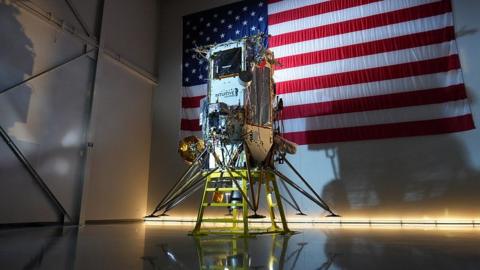It is considered a difficult and risky area to land in.
The sun is low in the sky and casts shadow that can confuse landers trying to touch down. And the amount of sunlight reaching the craft can limit how much electricity it produces in its solar panels.
Radio communications from Earth are also more difficult.
And Dr Barber says some of the instruments are likely to have been turned on briefly on Thursday, including the drill and a mass spectrometer that could identify chemicals in gases released from the lunar soil.
That is likely to generate some useful scientific information, he says.
The shortcomings of IM-2 are in contrast to the successful landing of a different private craft on Sunday by the company Blue Ghost in a different area of the Moon.
Nasa wants to send four astronauts to the Moon in 2027 in its Artemis programme. Its long-term goal is to take humans to Mars, using the Moon as a stepping stone.
It is working with private companies to drive down the cost of space exploration, but that means accepting a higher risk of failure.
"In face of setbacks, it requires a steady hand on the tiller and the vision to see the bigger picture", says Dr Barber, saying that knee-jerk responses to failures could "cause damage and delay".
